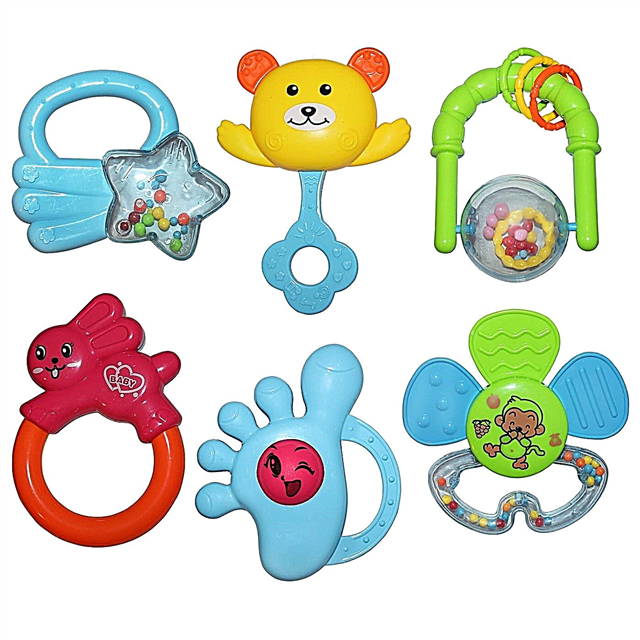Parents know how scary it is when they discover that a child has been bitten by a tick. Your thoughts start to swirl with worry. Thinking about Lyme disease, encephalitis and how to overcome all this. There is no doubt that these parasites are scary, but this does not mean that you need to wrap your children in protective film or keep them locked up in their bedrooms all summer long. Knowing how to remove ticks and prevent bites will help you relax when the kids go out to play.
General information about ticks
Ticks are small arachnid insects. They bite in order to fix themselves on human skin and feed on blood.
Ticks are carriers of the disease. But most of them do not carry infections, and most of the bites do not lead to serious illness.
Some people may be allergic to a tick bite. This reaction is mild, with symptoms such as itching and swelling. In rare situations, a serious allergic reaction can occur.
Prevention of a tick bite
First and foremost, try to prevent the tick bite.

1. Stick to the middle of a well-trodden path. Ticks like to live in tall grassy areas and cling to clothing when walking, touching the grass, or sitting on a log under a tree.
Make sure children are not wandering in tall grass or shrubbery.
2. Wear proper clothing when going outdoors. Ticks can crawl under shorts or crawl under a shirt to find a nice warm spot to bite.
Be sure to dress your child in long pants and a long-sleeved shirt. Pants should be tucked into socks and shirt should be tucked into trousers so that there are fewer potential entry points. Lighter clothing and socks make it easier to find the tick on clothing before it finds its way to the surface of the skin. Therefore, you can brush off the parasite before it can bite the child.
3. Use a safe and effective insect repellent that works against ticks often.
Several studies have found that various essential oils are effective in repelling and neutralizing mites. According to a 2004 study, lemon and eucalyptus extracts are effective in reducing the risk of tick bites. A 2008 study found tansy essential oils to be very effective in repelling ticks (up to 64 - 72%). Other essential oils that can be effective repellents are pink geranium, cloves, lavender, and rose.
Regardless of which oil product you choose to use, it should be applied frequently, every 2 to 3 hours, or more often. For example, after swimming. Remember, essential oils are effective because of their scent. If you cannot smell it, it is likely that the tick will not smell it either.
4. Frequent check of clothes for ticks.
Ideally, you will find the tick crawling on the baby's clothes before it can bite, and simply remove it. But the sooner you find a tick after being bitten, the less time it will have to transfer saliva, which contains borrelia bacteria and other harmful organisms. And the less likely the child will get Lyme disease and other tick-borne infections.
Just because a tick is a carrier of Borrelia and has bitten a child does not mean that he or she will have Lyme disease. While it is not entirely clear how long a tick needs to be in the skin to transmit infection, it is clear that the longer it is attached, the higher the risk of transmission.
Previously, it was thought that a tick must be attached for more than 24 hours for Lyme disease to transmit. But now it has become known that just a few hours may be enough. Although the risk is much greater if the tick has been attached to the child's skin for more than a day. Therefore, early detection and removal of ticks is key to preventing Lyme disease.
Always take time while walking in woodland to periodically check your body and your baby for ticks. Carefully check behind the ears and in them, on the back of the head, in the hair, run your hands over the entire head of the baby. Look under the shirt collar and under your armpits. Check the waist under the pants and any other possible entry points. In the event of a bite, you will find something that looks like dirt or a new mole that you have not noticed before. The larva is the smallest form of mites and is most common in spring / summer, about the size of a poppy seed.
5. As soon as you get home, remove your child's clothes and rinse in hot water. Bathe your baby immediately to remove any mites that are not yet fully attached, and do another thorough check for insects after the bath. Act as carefully as possible. Ticks love warm, damp, dark areas of the body, so check for hidden areas, especially in the ears, hair, scalp, abdomen, armpits, groin, or areas where clothes have been pressed against the skin.
What to do with a tick bite?
The best advice for parents who find a tick attached to their baby is not to panic and stay calm. There are simple steps you can take to remove the tick.
There are a few things you shouldn't do if your baby is bitten by a tick.
 DO NOT use petroleum jelly, nail polish, rubbing alcohol, or any other caustic substance on the mite;
DO NOT use petroleum jelly, nail polish, rubbing alcohol, or any other caustic substance on the mite;- DO NOT keep a lit match near the tick;
- DO NOT squeeze or press on the tick.
Doing any of these things can inadvertently cause the tick to spew more saliva, which carries Borrelia bacteria and other infections into the baby's body.
Unlike mosquitoes, the tick loves to attach itself by burying its head in the skin. If you notice a tick on your baby's skin, here's what to do:
- Try a warm, wet cotton ball first. Soak a cotton ball in warm soapy water and place it over the bite for 30 seconds. When you remove the cotton ball, the tick should come out with it.
- If that doesn't work, try removing the tick with tweezers. Use fine-tipped tweezers to grab the tick very close to the skin without crushing it. Pull with gentle firm pressure upward from the skin. Keep the pressure steady. Do not twist or twitch, this can rupture the tick, leaving the proboscis in the skin.
- After a while, you will suddenly feel the mite release the skin. Don't panic or drop the tweezers! Place the tick carefully in a plastic bag or jar and close the container. Place a small, damp cotton ball in a container with the mite removed to keep the mite from drying out before sending it for testing.
- If you have pulled out a tick, but the proboscis is still in the skin, do not try to pull it out. Head to the nearest hospital to remove it completely.
- Rinse the area immediately with warm water and apply any antiseptic you have. Pay attention to the site of the bite and circle it with a ballpoint pen so you can remember where it is.
What to do after removing the tick?
1. Laboratory examination of the tick.
The first thing to do is to send the tick to the lab to determine if it is actually a carrier of Lyme disease or other tick-borne infections. There are various laboratories that will determine the presence of borrelia or other mite microbes. Ticks can carry and transmit more than one infection, and knowing what symptoms to watch for is very helpful in early diagnosis.

2. Should children be given antibiotics for prevention?
The use of antibiotics for prophylaxis can inhibit the development of Lyme disease if given as soon as possible after a tick bite.
One study showed that a single dose of 200 mg doxycycline, given within 72 hours of tick attachment, may be effective in preventing erythema annulus. Most Lyme disease researchers do not believe that a single dose of antibiotics is adequate to prevent the disease and that at least a 3-week course is required to neutralize the bacterium in all its life forms.
3. Watch for signs of Lyme disease.
While the above precautions can be very effective in preventing Lyme disease, there are times when this is not enough.
Observe the tick bite and watch your baby. Only about 50 to 60% of Lyme patients ever notice the classic erythema annulus that widens outward from the bite site. The vast majority of people with chronic Lyme disease never remember a rash, so you should watch for other signs and symptoms of the condition so you know when to see your doctor.
Acute Lyme disease can develop anywhere between 3 and 30 days after being bitten, so be on the lookout for at least a month. Although, again, if you have taken the above precautions, the chances of a child getting Lyme disease are greatly reduced.
4. See a doctor immediately if your child develops symptoms of a serious allergic reaction.
They can include:
 rashes and hives all over the body;
rashes and hives all over the body;- swelling of the throat, mouth, lips, or tongue;
- labored breathing;
- loss of consciousness;
- signs of infection;
- severe pain, swelling, or redness in the area of the bite;
- red stripes leading from the bite;
- pus at the site of the bite;
- fever.
What you need to know about Lyme disease?
There are symptoms of early and late illness.
Most people with Lyme disease do not remember being bitten by a tick, so for some, late symptoms are their first sign.
Early localized stage (a few days after the bite):
- skin rash. It is usually (but not always) erythema annular (redness) near the bite site;
- headaches or a stiff (inflexible) neck;
- flu-like symptoms, including fever or chills;
- pain in muscles and joints;
- deep fatigue or lack of energy;
- slight bruising or redness from a tick bite;
- swollen lymph nodes.
Early disseminated stage (weeks to several months after the bite):
 spread of skin rashes. The rash gets larger or thickens, covering more parts of the body;
spread of skin rashes. The rash gets larger or thickens, covering more parts of the body;- pain or numbness in the arms and legs;
- severe joint pain;
- deep fatigue;
- headaches and lack of energy;
- fainting;
- facial paralysis;
- poor memory or inability to concentrate;
- cardiopalmus.
Late stage (a few months after the bite):
- arthritis, especially in the knee or near the point of infection;
- nervous system problems, including numbness and tingling in your hands, feet, or back;
- severe headaches or migraines;
- problems with memory, hearing and vision;
- a stiff neck due to swollen tissue
- chronic fatigue;
- problems with mood or sleep;
- inflammation of the brain (encephalitis);
- inflammation of the heart (carditis).
In children, signs of Lyme disease can also include changes in behavior (anxiety, depression, fear, tantrums / aggression), tics, developmental regressions (such as deterioration in handwriting), cognitive decline, and memory problems.
What else can you get sick after a tick bite?
Not only Borrelia live in the saliva of ticks. These insects can carry the tick-borne encephalitis virus.
When infected, the disease does not appear immediately, but after a few weeks or even months. The first symptoms are headache, nausea, vomiting, impaired skin sensitivity, paresis (decreased muscle strength) or paralysis of the limbs, increased body temperature.
See your doctor if you have more than one of these symptoms.
In order to prevent the development of the disease after a bite, the child is injected with intramuscular immunoglobulin. But this is effective only for the first day.
If more time has passed, the baby should be given children's Anaferon for 21 days.
Knowledge is power, and armed with the right information, your whole family will enjoy a healthy, happy summer outdoors!

 DO NOT use petroleum jelly, nail polish, rubbing alcohol, or any other caustic substance on the mite;
DO NOT use petroleum jelly, nail polish, rubbing alcohol, or any other caustic substance on the mite; rashes and hives all over the body;
rashes and hives all over the body; spread of skin rashes. The rash gets larger or thickens, covering more parts of the body;
spread of skin rashes. The rash gets larger or thickens, covering more parts of the body;

